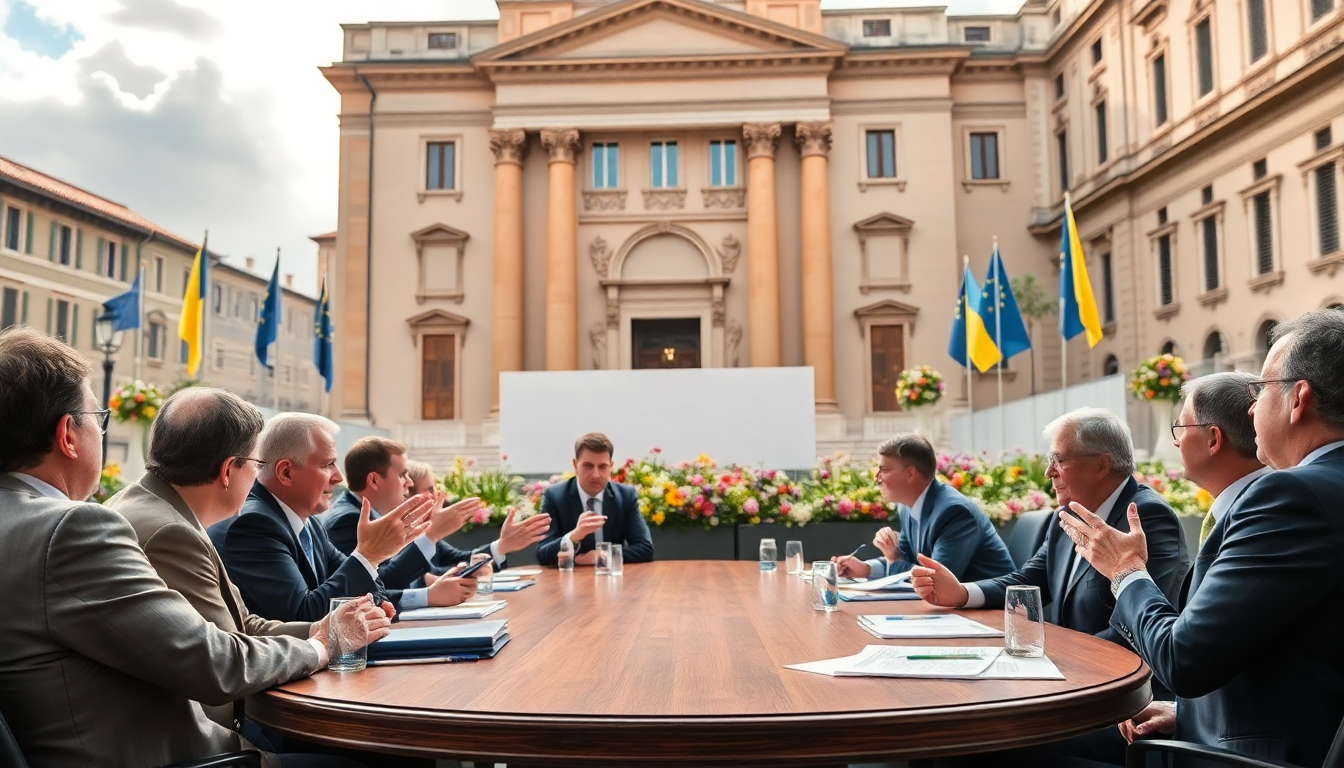Table of Contents
In a significant moment at the Ukraine Recovery Conference held in Rome, European Commission President Ursula von der Leyen announced the launch of the European Flagship Fund for the Reconstruction of Ukraine. This initiative aims to become the **largest equity fund** in the world, specifically focused on revitalizing Ukraine as it recovers from the devastation of war. By harnessing both public and private investments, the fund seeks to drive essential development in sectors like energy, transport, and dual-use industries. It’s clear: Europe is committed to supporting Ukraine, and the time to invest is now.
A Comprehensive Overview of the Fund
The European Flagship Fund is not just a financial mechanism; it represents a pivotal step toward mobilizing the necessary investments for Ukraine’s recovery after the extensive destruction inflicted by Russia’s ongoing military actions. This ambitious initiative is set to attract significant financial support from key European players, including Italy, Germany, France, Poland, and the European Investment Bank. Von der Leyen expressed hope that even more nations would join this coalition, emphasizing the pressing nature of the crisis.
As it stands, Ukraine is facing a dire financial situation, needing at least **$40 billion in external financing** by 2026. This urgent need arises from the necessity to allocate substantial parts of its state budget to defense due to the ongoing conflict. Ukrainian Finance Minister Serhii Marchenko underscored the importance of consistent external support to uphold the financial stability that has been achieved since 2022, laying a solid groundwork for successful reconstruction.
Investment Needs and Economic Implications
The scale of reconstruction required in Ukraine is nothing short of staggering. Estimates indicate that the country will need approximately **$524 billion** over the next decade to restore its infrastructure and economy—a daunting challenge given the current circumstances. The European Union has taken a leadership role in providing aid, having already committed **€165 billion** and planning to sustain this support at least until 2028, which is a significant portion of the funding necessary for reconstruction.
In her remarks, von der Leyen pointed out that Europe will cover an impressive **84 percent** of Ukraine’s external financing needs for this year alone. This commitment includes an additional **€1 billion in macro-financial support** and over **€3 billion from the Ukraine facility**. Such investment not only aims to bolster Ukraine but also presents a unique opportunity for European nations to strengthen their economies through collaboration and shared resources.
Broader European Perspectives on Reconstruction
Ukrainian President Volodymyr Zelenskyy has made it clear that investing in Ukraine’s reconstruction isn’t just beneficial for Ukraine; it’s advantageous for the entire European continent. As Ukraine continues to develop cutting-edge military technologies amidst the conflict, these advancements could be shared with European allies, enhancing collective security against threats like Russian aggression. This cooperation could lead to a more resilient economic and military framework across Europe.
The conversations taking place in Rome reflect a growing recognition of how interconnected European nations are and the importance of solidarity in facing shared challenges. With recent decisions regarding military aid from the Pentagon and the shifting geopolitical landscape, strategic investments are set to play a pivotal role in shaping the future of both Ukraine and Europe.


